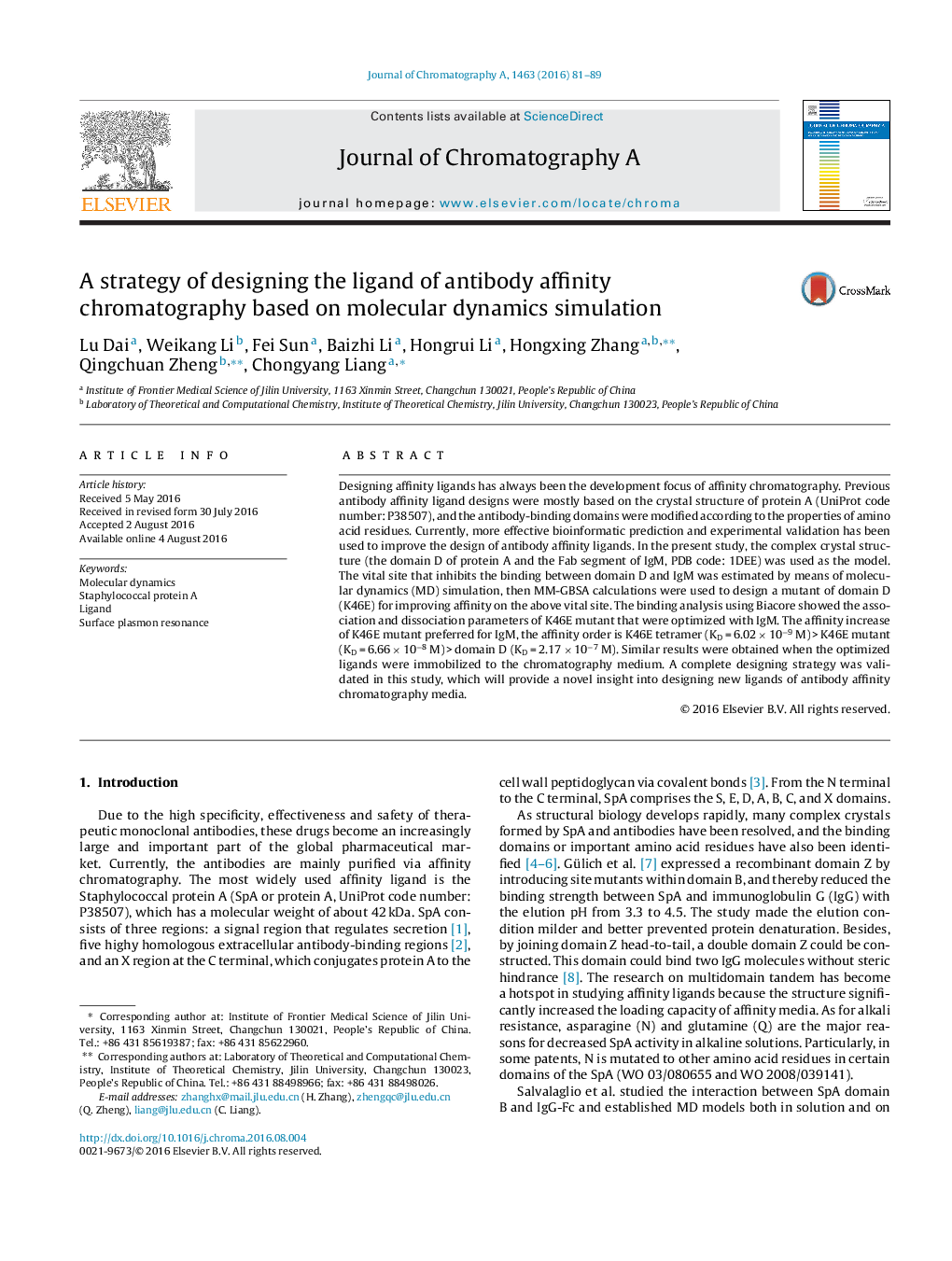| Article ID | Journal | Published Year | Pages | File Type |
|---|---|---|---|---|
| 1198333 | Journal of Chromatography A | 2016 | 9 Pages |
•A new strategy to design ligand of antibody affinity media by MD simulation.•Bioinformatics, Genetic Engineering and SPR test form the new strategy.•A tetramer of SpA domain D mutant exerted higher binding ability in SPR test.
Designing affinity ligands has always been the development focus of affinity chromatography. Previous antibody affinity ligand designs were mostly based on the crystal structure of protein A (UniProt code number: P38507), and the antibody-binding domains were modified according to the properties of amino acid residues. Currently, more effective bioinformatic prediction and experimental validation has been used to improve the design of antibody affinity ligands. In the present study, the complex crystal structure (the domain D of protein A and the Fab segment of IgM, PDB code: 1DEE) was used as the model. The vital site that inhibits the binding between domain D and IgM was estimated by means of molecular dynamics (MD) simulation, then MM-GBSA calculations were used to design a mutant of domain D (K46E) for improving affinity on the above vital site. The binding analysis using Biacore showed the association and dissociation parameters of K46E mutant that were optimized with IgM. The affinity increase of K46E mutant preferred for IgM, the affinity order is K46E tetramer (KD = 6.02 × 10−9 M) > K46E mutant (KD = 6.66 × 10−8 M) > domain D (KD = 2.17 × 10−7 M). Similar results were obtained when the optimized ligands were immobilized to the chromatography medium. A complete designing strategy was validated in this study, which will provide a novel insight into designing new ligands of antibody affinity chromatography media.
